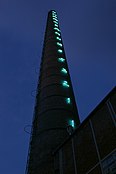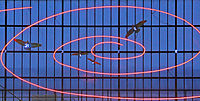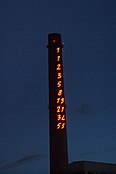
In mathematics, the Fibonacci sequence is a sequence in which each number is the sum of the two preceding ones. Numbers that are part of the Fibonacci sequence are known as Fibonacci numbers, commonly denoted Fn . The sequence commonly starts from 0 and 1, although some authors start the sequence from 1 and 1 or sometimes from 1 and 2. Starting from 0 and 1, the sequence begins

In mathematics, two quantities are in the golden ratio if their ratio is the same as the ratio of their sum to the larger of the two quantities. Expressed algebraically, for quantities and with , is in a golden ratio to if

Lateralus is the third studio album by the American rock band Tool. It was released on May 15, 2001, through Volcano Entertainment. The album was recorded at Cello Studios in Hollywood and The Hook, Big Empty Space, and The Lodge, in North Hollywood, between October 2000 and January 2001. David Bottrill, who had produced the band's two previous releases Ænima and Salival, produced the album along with the band, and became the last Tool album produced by Bottrill to date. On August 23, 2005, Lateralus was released as a limited edition two-picture-disc vinyl LP in a holographic gatefold package.
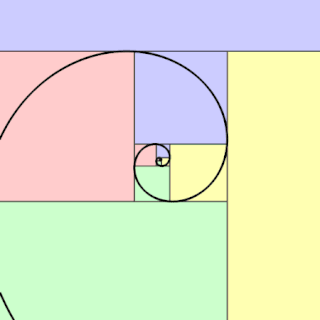
In geometry, a golden spiral is a logarithmic spiral whose growth factor is φ, the golden ratio. That is, a golden spiral gets wider by a factor of φ for every quarter turn it makes.

In geometry, a golden rectangle is a rectangle whose side lengths are in the golden ratio, , which is , where is approximately 1.618.
88 (eighty-eight) is the natural number following 87 and preceding 89.
89 (eighty-nine) is the natural number following 88 and preceding 90.

The Lucas sequence is an integer sequence named after the mathematician François Édouard Anatole Lucas (1842–1891), who studied both that sequence and the closely related Fibonacci sequence. Individual numbers in the Lucas sequence are known as Lucas numbers. Lucas numbers and Fibonacci numbers form complementary instances of Lucas sequences.
In mathematics, the random Fibonacci sequence is a stochastic analogue of the Fibonacci sequence defined by the recurrence relation , where the signs + or − are chosen at random with equal probability , independently for different . By a theorem of Harry Kesten and Hillel Furstenberg, random recurrent sequences of this kind grow at a certain exponential rate, but it is difficult to compute the rate explicitly. In 1999, Divakar Viswanath showed that the growth rate of the random Fibonacci sequence is equal to 1.1319882487943..., a mathematical constant that was later named Viswanath's constant.

In botany, phyllotaxis or phyllotaxy is the arrangement of leaves on a plant stem. Phyllotactic spirals form a distinctive class of patterns in nature.

The Mole Antonelliana is a major landmark building in Turin, Italy, named after its architect, Alessandro Antonelli. A mole in Italian is a building of monumental proportions.

A Fibonacci word is a specific sequence of binary digits. The Fibonacci word is formed by repeated concatenation in the same way that the Fibonacci numbers are formed by repeated addition.
In music, polymodal chromaticism is the use of any and all musical modes sharing the same tonic simultaneously or in succession and thus creating a texture involving all twelve notes of the chromatic scale. Alternately it is the free alteration of the other notes in a mode once its tonic has been established.
In music, the acoustic scale, overtone scale, Lydian dominant scale, or the Mixolydian ♯4 scale is a seven-note synthetic scale. It is the fourth mode of the ascending melodic minor scale.

Mario Merz was an Italian artist, and husband of Marisa Merz.
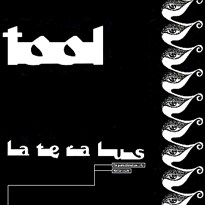
"Lateralus" is a song by American rock band Tool. The song is the third single and title track of their third studio album Lateralus.

Patterns in nature are visible regularities of form found in the natural world. These patterns recur in different contexts and can sometimes be modelled mathematically. Natural patterns include symmetries, trees, spirals, meanders, waves, foams, tessellations, cracks and stripes. Early Greek philosophers studied pattern, with Plato, Pythagoras and Empedocles attempting to explain order in nature. The modern understanding of visible patterns developed gradually over time.
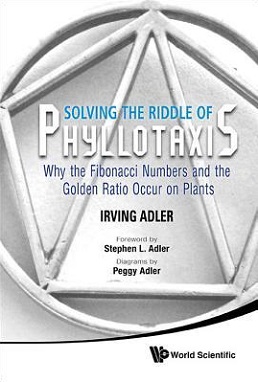
Solving the Riddle of Phyllotaxis: Why the Fibonacci Numbers and the Golden Ratio Occur in Plants is a book on the mathematics of plant structure, and in particular on phyllotaxis, the arrangement of leaves on plant stems. It was written by Irving Adler, and published in 2012 by World Scientific. The Basic Library List Committee of the Mathematical Association of America has suggested its inclusion in undergraduate mathematics libraries.

In the mathematics of circle packing, a Doyle spiral is a pattern of non-crossing circles in the plane in which each circle is surrounded by a ring of six tangent circles. These patterns contain spiral arms formed by circles linked through opposite points of tangency, with their centers on logarithmic spirals of three different shapes.


